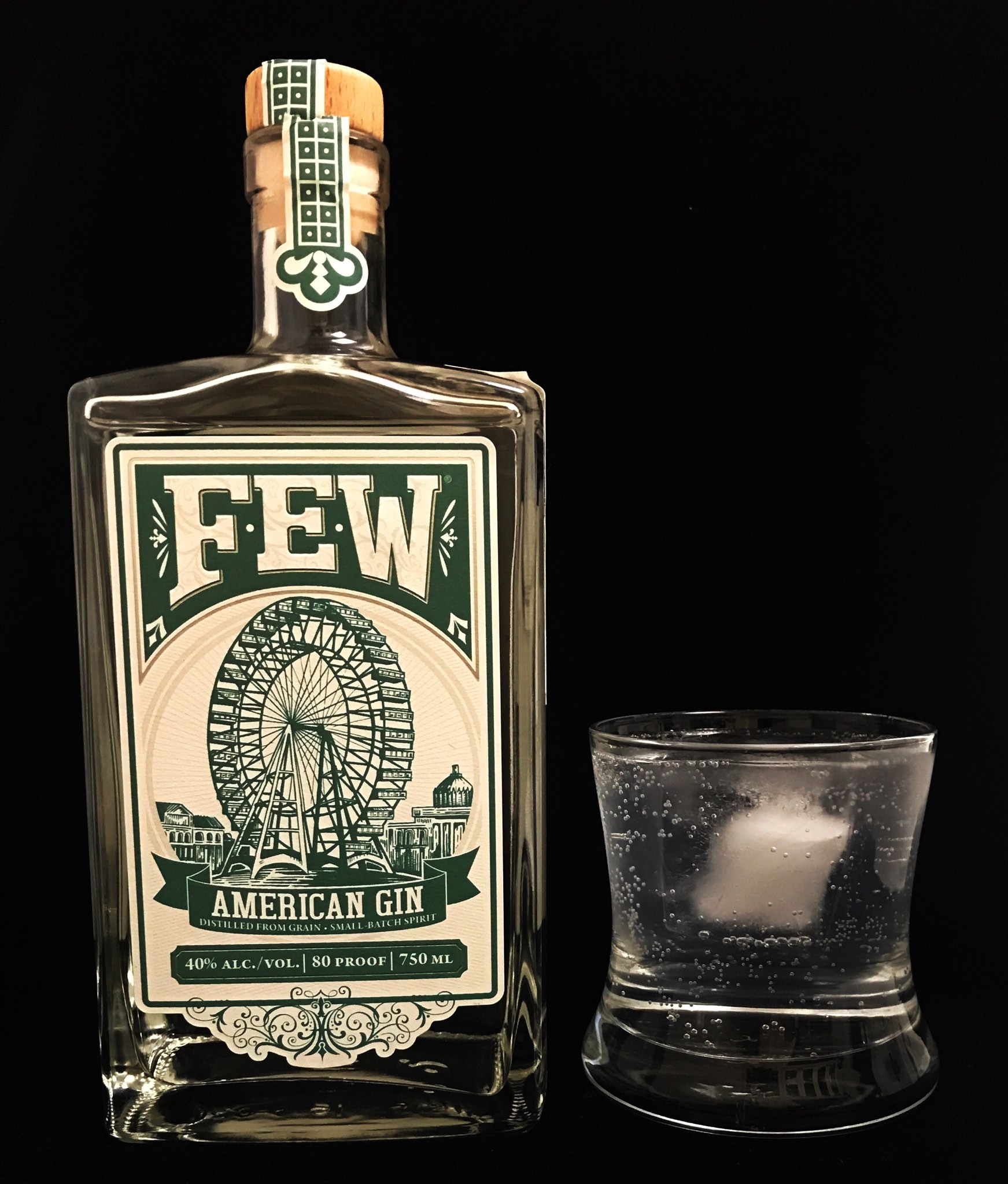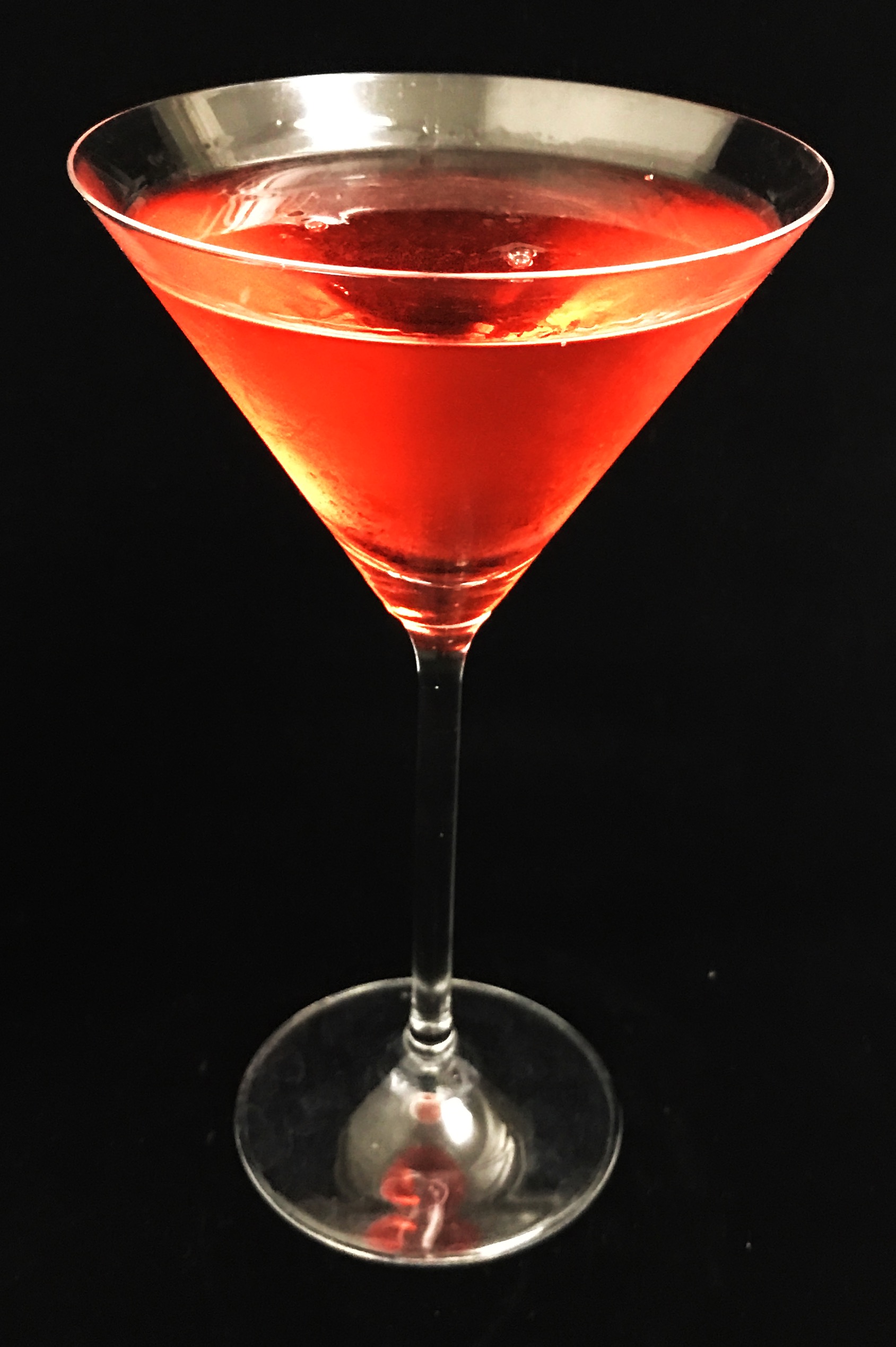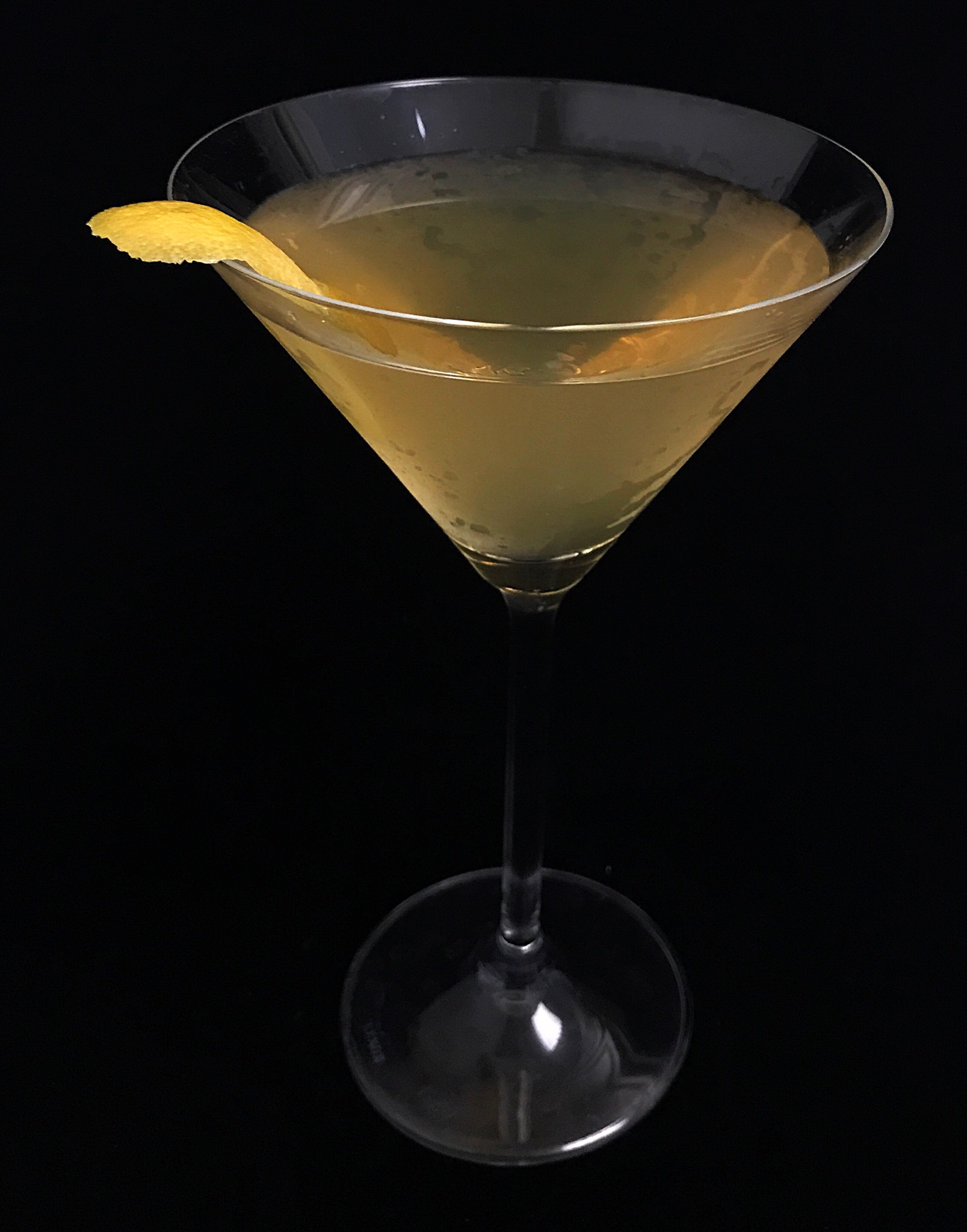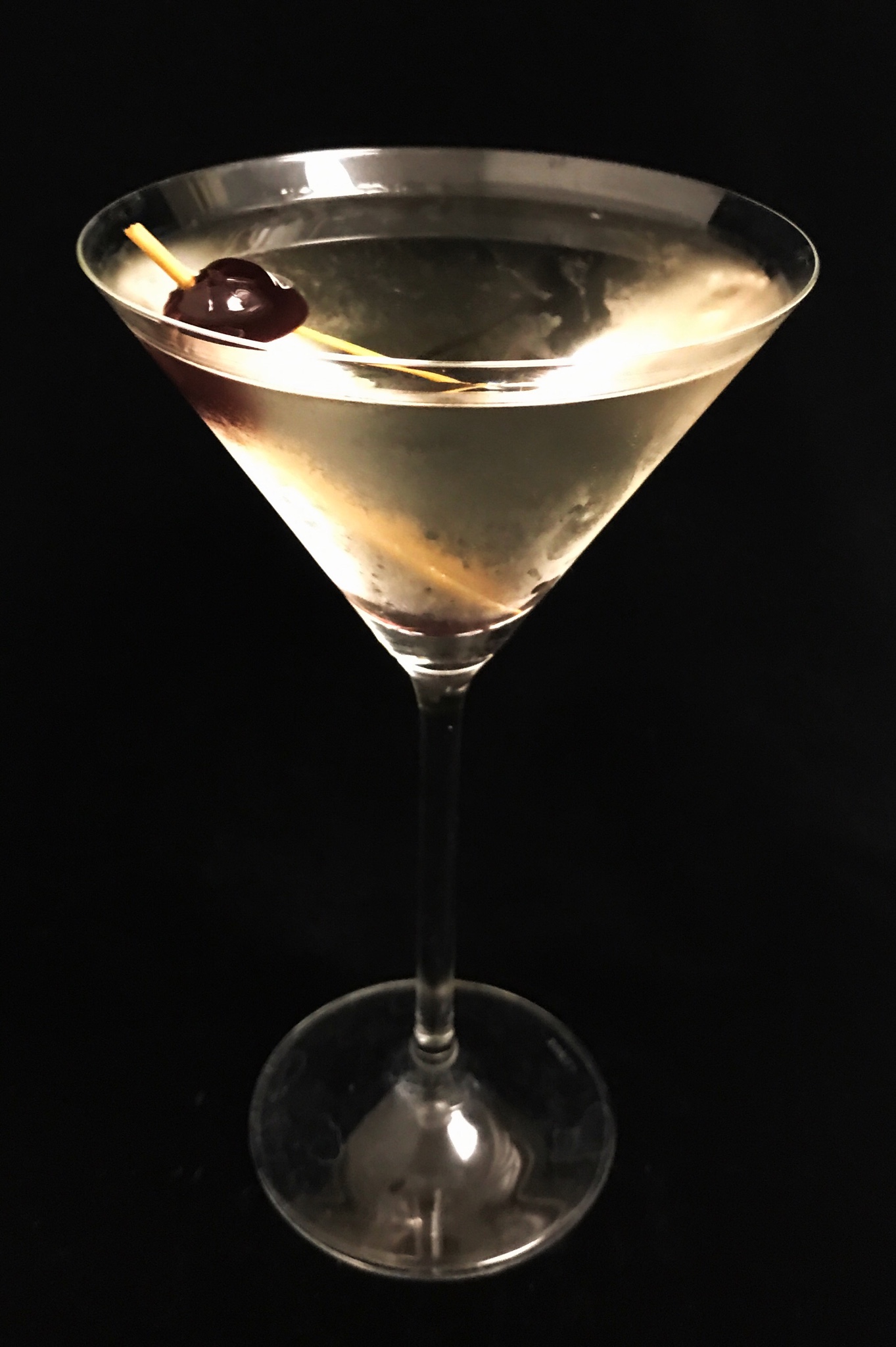From the bartender’s corner – Aviation Baron
As I mentioned before, I was somewhat underwhelmed by the Aviation gin when I opened the bottle. I tried over the next few days one more time neat, once with tonic water and regrettably, came to the same conclusion – while the nose is more in line with what I would expect from an American style gin, the palette was flat and weak. In fact, after fifteen seconds or so, it was almost like I was holding water in my mouth. The finish was even weaker.
Either I got a bad bottle or this gin is best used in cocktails. I tried last night with a couple of liquers and ingredients that would hide the weakness of the gin. A Baron is made with gin, both styles of vermouth (dry and sweet) and triple sec.

From the bartender’s corner – Gin #11: Aviation Gin
A couple of weeks back, I was in Portland, Oregon for work and one evening paid a visit to House Spirits Distillery to check out the making of Aviation Gin and perhaps pick up a bottle. Much to my surprise, I was told that while House Spirits Distillery still manufactures all the Aviation Gin that is ever made, the marketing and sales has been outsourced to Davos Brands. In fact, a quick search on the internet showed that Davos Brands has bought the “Aviation Gin” brand itself.
I was, however, given a tour of the distillery where the gin is made. The still itself, as you can see in the picture, is a stainless steel one with a full capacity of 400 gallons. The heating is done with steam (to about 78 degrees Celsius).
Neutral grain spirit (rye) is used and the botanicals include the usuals like juniper, coriander, cardamom along with some other common ones like anise and orange peel. What is unique is lavender and something they told me called Indian sasparilla. Till this day, I have not been able to figure out exactly what it is but it is supposed to render some of the floral-ness (along with lavender) to the gin.
Regarding the taste itself, this might be a slightly controversial topic. Purists who believe in the juniper-forward traditional gins (also called London Dry Gin), may not be a big fan of this style of gin (sometimes called American Dry Gin and this particular style often referred to as New Western Dry Gin). The key concept is that it is less junipery and sometimes citrus forward. Or maybe even floral. But the idea is go with less junipers.
I had an Aviation on the rocks. The nose was clearly very floral, thanks to the lavender. While many reviews of the gin describe it as “bold”, I have to say that I found the palette to be very mild. In fact, the finish was almost non-existent (very feeble junipers). Maybe my palette needed a lot more cleaning. I will try again for the couple of weeks. But if it is as weak as I think it is, I would probably use this mostly for cocktails that have strong complementary ingredients or botanicals. (e.g. a Negroni)

From the bartender’s corner – Artillery (with Nolet’s)
From the bartender’s corner – Blood Orange Blossom
Last night, I tried to play with the Nolet’s gin. If you remember, this has a floral accent and low on the juniper-y pine-y stuff. So, I tried the Blood Orange Blossom which introduces the bitter and orange-y Aperol and some lemon juice and simple syrup. I remember making an Orange blossom before with orange liqueur and sweet vermouth but the Blood Orange Blossom came thru much better. So much so, I made two of them last night!!
If you would like to try out some gin cocktail, this might be a good one to start with.

From the bartender’s corner – Gin #10: NOLET’S Silver
Sharmila and I cannot remember who introduced us to Nolet’s but I remember we immediately liked it. We were primarily Hendricks drinkers before that. Therefore, I was not surprised to find out later that some gin connoisseurs describe Nolets as Hendricks on steroids.
This evening I opened the tenth bottle of gin this year for my research and tasting and chose the bottle of Nolet. I usually start by trying it neat. When I did so, it immediately reminded me of ESME from France. It had a strong floral nose to it (Esme has rose). A little more research – and sure enough, one of the key ingredients for Nolet’s Silver is Turkish rose!
While most of the botanicals are kept secret, they do let you know that they use Turkish rose, peach and raspberry. As a result, the nose is very soft and the palette is pretty smooth. Interestingly, juniper – the main ingredient in all gins is very understated. Towards the end, in the finish, you will sense something pine-like and my guess is that is the juniper trying to make a brave attempt in making its presence felt.
The base alcohol is made from European wheat which is fermented and distilled multiple times to give a very strong – 193 proof!! neutral grain spirit. The final gin – at 94 proof – is stronger than most gins but it retains its smoothn and soft side due to the botanicals.
The distillery – Royal Nolet Distillery in Schiedam, Netherlands has a very rich history. It was established in 1691 (making it the oldest distillery in the Netherlands) and used to make Genever. (You may remember Genever to be the original grandfather of modern gin). The distillery is still owned and run by the original family – now in its eleventh generation (Carl Jr. and Bob Nolet). If any of you have had Ketel One vodka – well, that is made in this same distillery. The process uses a Copper Pot / Column hybrid still. Interestingly, the distillery is powered entirely by windmills!!
Thoroughly enjoyed this gin. Will see next what a G&T (gin and tonic) would taste like.

From the bartender’s corner – Arthur Tompkins
From the bartender’s corner – Gin #9: FEW
FEW is an American Style Gin. If you have followed all my Gin research by now, you probably realize that Genever was the original drink from the Belgium/Netherlands area. Then came Tom Gin and finally London Dry style (which is not aged in a barrel at all). American style Gin is a very recent phenomenon and they tend to be (not always) less junipery and a little more citrus forward.
That said, this Gin is very different. To begin with, there is a distinct wood-y nose. Which is surprising for a gin not aged in a barrel till you realize that the base of this gin is not the traditional neutral grain but more akin to white whiskey. The warm toasty malty nose comes from the base of barley, corn and whiskey used.
In terms of the botanicals, other than the standard juniper, citrus, orange peels, lemon and cassia, you have the interesting twists of vanilla (Tahitian vanilla), grains of paradise and home grown hops.
If you are into brown alcohols and want to try gins, you will like this. If you are not too much into barrel aged alcohols, do not take this straight up or with tonic water. Your best way to try this might be with something that compensates for the woody-ness — perhaps a cocktail like Negroni or a Martini.
FEW is made in an interesting place – Evanston – about 30 miles north of Chicago and very close to the Northwestern University. The real interesting part of this area is that this was one of the areas that inspired the Prohibition area!! The distillery is rather new – only about 6 years in existence.
I would also put this gin on the higher end of price – although nothing like Monkey 47.

From the bartender’s corner – Esme Aviation
From the bartender’s corner – Esme Jasmine
Jasmine was the first cocktail I experimented with the Esme gin. The floral essence of the gin played rather well with the edgy bitterness of a Campari. To soften the Campari, I went with some Triple Sec and then some lemon juice to retain the citrus-forward gin’s character.
The nose was mostly carried by the gin and the Triple sec – junipers, orange and rose petals were the most prominent. The palette started with the citrusy taste but quickly the soft bitterness of Campari took over and settled down. The finish was mostly the junipers, the lemons and the rose petals.




